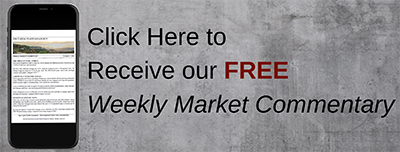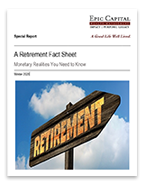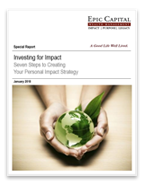Rolling Over Funds from an Employer Retirement Savings Plan: What You Need to Know
May 19, 2023

You got the job, what do you do with your old 401k?When you leave your employer, you have several options available to you for managing your retirement savings plan assets. You can leave the money in the current plan, if allowed; you can cash out and take a lump-sum distribution; or you can roll over the funds from your current plan into another employer plan, if allowed, or an IRA.
Why consider a rollover?
When you roll over a distribution from a 401(k), 403(b), or governmental 457(b) plan, you generally don’t pay any taxes until you receive a distribution from the new plan or IRA. If you take a distribution but don’t roll it over, it will be subject to federal (and possibly state) income taxes (except for any after-tax contributions you’ve made); and if you haven’t yet reached age 59½, you may also be subject to a 10% early distribution penalty tax unless you’re eligible for an exception.1 If you take a cash distribution, you’re also foregoing any further tax-advantaged growth; and if you spend the funds, you may not have sufficient assets to last throughout retirement.
Special rules apply to distributions from designated Roth accounts: Qualified distributions are entirely tax-free, and only earnings are taxed if your distribution is nonqualified. A distribution is qualified if you satisfy a five-year holding period and you are age 59½, disabled, or use the funds to purchase your first home ($10,000 lifetime cap). State tax rules may be different.
Not all distributions are eligible to be rolled over. You cannot roll over hardship withdrawals, required minimum distributions, substantially equal periodic payments, corrective distributions, and certain other payments. Nonspousal death benefits can be rolled over only to an inherited IRA, and only in a direct rollover.
Reasons to roll over to an IRA
- You generally have more investment choices with an IRA than with an employer plan. You typically may freely move your money around among the various investments offered by your IRA trustee, and you may divide your balance among as many of those investments as you want. By contrast, employer plans typically give you a limited menu of investments (usually mutual funds) from which to choose.
- You can freely move your IRA dollars among different IRA trustees/custodians. Unlike indirect (60-day) rollovers between IRAs, which are generally limited to one in any 12-month period, there is no limit on how many direct, trustee-to-trustee IRA transfers you can do in a year. This gives you flexibility to change trustees often if you are dissatisfied with investment performance or customer service. It can also allow you to have IRA accounts with more than one institution for added diversification. With an employer’s plan, you cannot move the funds to a different trustee unless you leave your job and roll over the funds.
- An IRA may give you more flexibility with distributions. The distribution options available to you and your beneficiaries in an employer plan are typically more limited. With an IRA, the timing and amount of distributions are generally at your discretion (until you must start taking required minimum distributions, if applicable).
- If you’ve made Roth contributions to your 401(k) or 403(b) plan, those contributions (plus any investment earnings on them) will be subject to required minimum distribution (RMD) rules after you turn 73 (for those who reach age 72 after December 31, 2022), or after you retire, if later, if you own 5% or less of your employer. You can avoid the RMD rules by rolling your Roth contributions over to a Roth IRA (Roth IRAs are not subject to the lifetime RMD rules).2
- You can use an individual retirement annuity to effectively annuitize all or part of your employer plan benefit. This can be helpful if your plan doesn’t provide an annuity option.
Before investing in a mutual fund, carefully consider the investment objectives, risks, charges, and expenses of the fund. This information can be found in the prospectus, which can be obtained from the fund. Read it carefully before investing. Diversification alone cannot guarantee a profit or ensure against the possibility of loss. All investing involves risk, including the potential loss of principal, and there can be no guarantee that any strategy will be successful.
Reasons to leave in, or roll over to, an employer’s retirement plan
- Many employer-sponsored plans have loan provisions. If you roll over your retirement funds to a new employer’s plan that permits loans, you can generally borrow against your vested balance in the new plan, including the amount rolled over, if you need money. You cannot borrow from an IRA — you can only access the money in an IRA by taking a distribution, which may be subject to income tax and penalties.
- A rollover to another employer plan may provide greater creditor protection than a rollover to an IRA. Most qualified employer plans [like 401(k) plans] receive virtually unlimited protection from creditors under federal law. Your creditors cannot attach your plan funds to satisfy any of your debts and obligations, regardless of whether you’ve declared bankruptcy. In contrast, traditional and Roth IRAs are generally protected under federal law only if you declare bankruptcy. Any creditor protection your IRA may receive in cases outside of bankruptcy will generally depend on the laws of your particular state. If you are concerned about asset protection, be sure to seek the assistance of a qualified professional. [Special rules apply to individual (solo) 401(k) plans, governmental plans, and certain church plans.]
- Distributions from your employer plan won’t be subject to the 10% early distribution penalty if you retire during the year you turn 55 or later (age 50 for qualified public safety employees). However, distributions from your IRA before you reach age 59½ will be subject to the penalty, unless an exception applies.
- You may be able to postpone any required minimum distributions. These distributions usually must begin no later than April 1 following the year you reach age 73 (for those who reach age 72 after December 31, 2022). However, if you work past that age, are still participating in your employer’s retirement plan, and own no more than 5% of the company, you can delay your first distribution from that plan until April 1 following the year of your retirement.
- While IRAs typically provide more investment choices than an employer plan, there may be certain investment opportunities in your particular plan that you cannot replicate with an IRA. Further, you may be satisfied by potentially lower-cost funds available in your particular plan, and therefore may not regard an IRA’s broader array of investments as an important factor.
Other considerations
Both employer retirement plans and IRAs typically have: (1) investment-related expenses and (2) plan or account fees. Investment-related expenses may include sales loads, commissions, the expenses of any mutual funds in which assets are invested, and investment advisory fees. Plan fees typically include plan administrative fees (e.g., recordkeeping, compliance, trustee fees) and fees for services, such as access to a customer service representative. In some cases, employers pay for some or all of the plan’s administrative expenses. An IRA’s fees may include, for example, administrative, account setup, and custodial fees. Be sure to carefully consider the expenses and fees in each alternative.
Also be sure to consider the different levels of service available under the employer’s plan versus an IRA. Some employer plans, for example, provide access to investment advice, planning tools, telephone help lines, educational materials, and workshops. Similarly, IRA providers offer different levels of service, which may include full brokerage service, investment advice, distribution planning, and access to securities execution online.
Special considerations for distributions from designated Roth accounts
In order to receive a tax-free qualified distribution of earnings from a Roth IRA or from a designated Roth 401(k), 403(b), or 457(b) account, you must satisfy a five-year holding period. Separate five-year holding periods apply to designated Roth accounts and Roth IRAs. If you receive a nonqualified distribution from a designated Roth account and roll it over to a Roth IRA, the investment earnings rolled over will then be subject to the Roth IRA’s five-year holding period. So, for example, if your money has been in a designated Roth account for four years, and you roll those dollars into your first Roth IRA, they will be subject to a new five-year holding period — the amount of time those dollars spent in the 401(k) plan does not affect your Roth IRA holding period.
On the other hand, if you receive a distribution from your designated Roth account and roll it over into a designated Roth account in a new employer’s 401(k), 403(b), or 457(b) plan, your five-year holding period in the receiving plan, for both the amount rolled over and other funds in the receiving plan, will be the five-year holding period in the distributing plan or the five-year holding period in the receiving plan, whichever ends first (i.e., whichever is more favorable to you).
Required minimum distributions (RMDs) are generally required from Roth 401(k)/403(b) accounts after you turn 73 (for those who reach age 72 after December 31, 2022), or after you retire, if later, unless you’re a 5% owner. However, Roth IRAs are not subject to the lifetime RMD rules. You can avoid the Roth 401(k)/403(b) lifetime RMD rules by rolling your eligible distribution over to a Roth IRA.2
This information is not intended as tax, legal, investment, or retirement advice or recommendations.
1If your distribution includes employer stock or other securities special tax rules may apply that can make taking a distribution more advantageous than making a rollover. Consult a tax professional.
2 Beginning in 2024, Roth accounts in employer plans will be exempt from RMDs.
For more insights and resources, be sure to sign up for our Weekly Market Commentary. Follow our YouTube channel where we regularly post our Epic Market Minute videos. Follow us on LinkedIn, or like us on Facebook. And as always, please don’t hesitate to reach out to a dedicated service professional at Epic Capital.
Tags: Financial Planning, Personal Finance, retirement, Retirement Planning
More Insights
Key Takeaways Volatility came back with a vengeance this week as selling pressure in the mega cap space dragged down the broader market. Counterbalancing weakness in these heavyweight names poses a challenge for the rest of the market. Overbought conditions can also be blamed for the recent weakness. The S&P 500 reached a 14.9% premium … Continue reading “Market Update – Assessing the Technical Damange”
Life insurance can be an excellent tool for charitable giving. Not only does life insurance allow you to make a substantial gift to charity at relatively little cost to you, but you may also benefit from tax rules that apply to gifts of life insurance.
When you think of Social Security, you probably think of retirement. However, Social Security can also provide much-needed income to your family members when you die, making their financial lives easier. Your family members may be eligible to receive survivor benefits if you worked, paid Social Security taxes, and earned enough work credits. The number … Continue reading “Social Security Survivor Benefits”
Information vs. instinct. When it comes to investment choices, many people believe they have a “knack” for choosing good investments. But what exactly is that “knack” based on? The fact is, the choices we make with our assets can be strongly influenced by factors, many of them emotional, that we may not even be aware … Continue reading “Making Investment Choices”
As a business owner, you should carefully consider the advantages of establishing an employer-sponsored retirement plan. Generally, you’re allowed certain tax benefits for establishing an employer-sponsored retirement plan, including a tax credit for establishing the plan and a deduction for contributions you make. In return, however, you’re required to include certain employees in the plan, … Continue reading “Retirement Plans for Small Businesses”
Services
Epic Capital provides the following comprehensive financial planning and investment management services: Learn More >


 Top of Page
Top of Page











